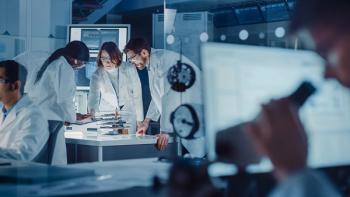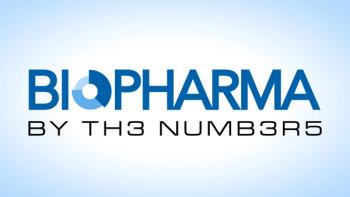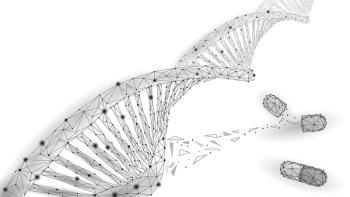
- BioPharm International, April 2024
- Volume 37
- Issue 4
- Pages: 28–30
Evolving Cleanroom Procedures and Sterility Challenges
The shift toward personalized medicines poses new challenges in cleanroom protocols.
Maintaining a sterile cleanroom environment and stringent cleanroom protocols in biopharmaceutical manufacturing are critical to ensure optimal product quality and, ultimately, patient safety. With the shift toward personalized medicines, new generation therapies, such as messenger RNA (mRNA), cell and gene therapies (CGTs), antibody-drug conjugates, and modern vaccines, are presenting sterility challenges. Therefore, it is becoming increasingly necessary for analytical technologies to advance and keep pace with the evolving, modern-day therapeutic requirements for sterile environments in cleanrooms.
Evolving SOPs
As therapeutic modalities evolve, so do the challenges and methodologies associated with maintaining and verifying cleanroom sterility. Cleanroom standard operating procedures (SOPs) are the foundation to ensuring controlled, contaminant-free environments. Recent regulatory updates have prompted revisions to these procedures to align with contemporary standards and technological advancements.
For example, the International Organization for Standardization (ISO) updated the ISO 14644 series in 2015 (1), which delineates cleanroom classifications and associated protocols. In the series, ISO 14644-1 focuses on classifying air cleanliness by particle concentration, and ISO 14644-2 enumerates the requirements for testing and monitoring to ensure ongoing compliance with designated cleanliness levels. With these updates, a more rigorous approach to contamination control is emphasized, which necessitates that SOPs incorporate enhanced monitoring and maintenance strategies (1).
FDA, meanwhile, has advocated for integrating rapid and advanced detection methods into sterility testing, with the goal of expediting detection of microbial contaminants and reducing product release times without compromising safety. As a result, SOPs now often include provisions for implementing rapid microbiological methods (RMMs) alongside traditional testing techniques (2).
Maintaining sterile cleanrooms
Sustaining sterility within cleanrooms poses multifaceted challenges, both enduring and emerging. Challenges that continue to persist include:
- Human factors. Personnel remain the primary source of contamination. This is commonly attributed to inadequate gowning procedures, lapses in protocol adherence, and insufficient training—all of which can introduce particulates and microbes into the cleanroom environment (3).
- Environmental monitoring. Continuous surveillance of particulate and microbial levels is crucial; however, traditional monitoring methods may not provide real-time data, which potentially allows contaminants to proliferate before detection (4).
- Facility design and maintenance. Suboptimal cleanroom design or maintenance can lead to contamination risks. Improper airflow, inadequate filtration systems, and poorly maintained equipment are factors that can compromise sterility (5).
Meanwhile, emerging challenges posed by new therapeutic modalities, such as CGTs and mRNA-based treatments include:
- Product sensitivity. These new modalities often involve living cells or delicate nucleic acids, which are highly susceptible to environmental conditions. Therefore, maintaining appropriate temperature, humidity, and aseptic conditions is paramount.
- Complex manufacturing processes. Production of these modalities typically involves intricate procedures, which increases the potential for contamination at multiple stages of the manufacturing process. Each step necessitates stringent controls to preserve product integrity.
- Rapid turnaround requirements. Many advanced therapies have limited shelf lives, necessitating expedited manufacturing and testing processes. Traditional sterility testing methods, which can take up to 14 days, are impractical for these products, prompting the need for rapid testing alternatives (6).
Traditional analytical methods
On the other end of contamination prevention is verification of sterility, which is also a critical step to ensuring a product’s safety and efficacy. Verification requires analytical testing methods, including membrane filtration, direct inoculation, and automated culture systems.
In membrane filtration, product is passed through a filter that captures potential contaminants. The filter is then incubated in growth media to detect microbial presence (7). Direct inoculation is applied to products that cannot undergo filtration. In this method, product is directly inoculated into culture media, incubated, and microbial growth is monitored over a specified period of time (8). Meanwhile, automated culture systems were developed to enhance efficiency and reliability. In these systems, product is continuously monitored for microbial growth. This method offers advantages in sensitivity and reduced hands-on time compared to manual methods (9).
Analytical testing innovations
The evolving regulatory requirements over the years as well as the increasing biopharmaceutical complexity and growing demand for aseptic processing have prompted significant advancements in cleanroom technologies and analytical testing methods. These innovations have been driven by the need for faster, more accurate contamination detection, improved environmental monitoring, and greater flexibility in biomanufacturing. Innovations include rapid microbiological methods (RMMs), next-generation sequencing (NGS), real-time environmental monitoring, and the use of digitalization and artificial intelligence (AI) in cleanroom analytics.
The adoption of RMMs has been prompted by the lengthy time it takes for traditional sterility testing methods. For example, membrane filtration and direct inoculation can take up to 14 days to get results. RMMs utilize technologies such as nucleic acid amplification (e.g., polymerase chain reaction-based assays), flow cytometry, and adenosine triphosphate bioluminescence to detect microbial contaminants in real-time or within hours rather than days (4). Advanced therapies such as CGTs and mRNA-based therapeutics require faster contamination detection than traditional methods and have been the real drivers behind accelerating the implementation of RMMs.
NGS, meanwhile, has emerged as an important tool for microbial identification in cleanrooms as it enables the detection and characterization of diverse microbial populations, unlike conventional culture-based methods. NGS also enables the detection of previously unculturable organisms. This technology enhances contamination tracing and root-cause investigations and can lead to more effective contamination control strategies (10).
Real-time environmental monitoring has been enabled with the development of advanced sensors. The ability to monitor particles and microbes in real time is changing the way contamination control is handled in the cleanroom. For example, technologies such as laser-induced fluorescence sensors allow for immediate airborne microbial detection without the need for culture-based methods. Systems such as those are often integrated into continuous environmental monitoring platforms and provide instant alerts to deviations in cleanroom conditions (2).
Finally, AI-driven analytics, combined with machine learning algorithms, are being deployed to analyze environmental monitoring data, detect contamination patterns, and predict contamination risks before they occur. Having this predictive approach enables proactive decision-making and reduces the risk of contamination events, which in turn minimizes production shutdowns (11).
References
1. ISO. ISO 14644, Cleanrooms and Associated Controlled Environments Standards (2015).
2. Thermo Fisher Scientific. Rapid Sterility Testing: Overcoming Challenges in Cell Therapy Production. www.thermofisher.com, Oct. 30, 2024.
3. Whyte, W. Cleanroom Technology: Fundamentals of Design, Testing and Operation; Wiley, 2010.
4. Agalloco, J.; Akers, J. Advanced Aseptic Processing and Biopharmaceutical Manufacturing;CRC Press, 2016.
5. Sandle, T. Cleanroom Microbiology for the Non-Microbiologist; CRC Press, 2019.
6. Jallow, J. Rapid Sterility Testing for Cell and Gene Therapy Treatments. americanpharmaceuticalreview.com, Dec. 1, 2023.
7. USP. USP General Chapter <71>, Sterility Tests. USP-NF (Rockville, Md., 2023).
8. PDA. Sterility Testing of Pharmaceutical Products. PDA Technical Report No. 33 (2019).
9. Khuu, H. M; Stock, F.; McGann, M.; et al. Comparison of Automated Culture Systems With a CFR/USP-Compliant Method for Sterility Testing of Cell-Therapy Products. Cytotherapy 2004, 6 (3), 183–195. DOI: 10.1080/14653240410005997
10. Xiao, Y.; Zhang, L.; Yang, B.; et al. Application of Next Generation Sequencing Technology on Contamination Monitoring in Microbiology Laboratory. Biosaf Health 2019, 1 (1), 25–31. DOI: 10.1016/j.bsheal.2019.02.003
11. Bradshaw, N. Using AI and Machine Learning in Cleanroom Contamination Control. blog.curemd.com (accessed March 7, 2025).
About the author
Feliza Mirasol is science editor at BioPharm International®.
Article details
BioPharm International®
Vol. 38, No. 3
April 2025
Pages: 28–30
Citation
When referring to this article, please cite it as Mirasol, F. Evolving Cleanroom Procedures and Sterility Challenges. BioPharm International 2025, 38 (3), 28–30.
Articles in this issue
over 1 year ago
Benefiting from Single-Use Tech Downstreamover 1 year ago
Driving Innovation in Nucleic Acid Therapeuticsover 1 year ago
A Closer Look at Affinity Ligandsover 1 year ago
Cleaning Process Design for Peptide Therapeuticsover 1 year ago
Taking Full Advantage of Service Providersover 1 year ago
May I Present the Neoantigenover 1 year ago
Focusing on Effectiveness for CAPAsNewsletter
Stay at the forefront of biopharmaceutical innovation—subscribe to BioPharm International for expert insights on drug development, manufacturing, compliance, and more.





